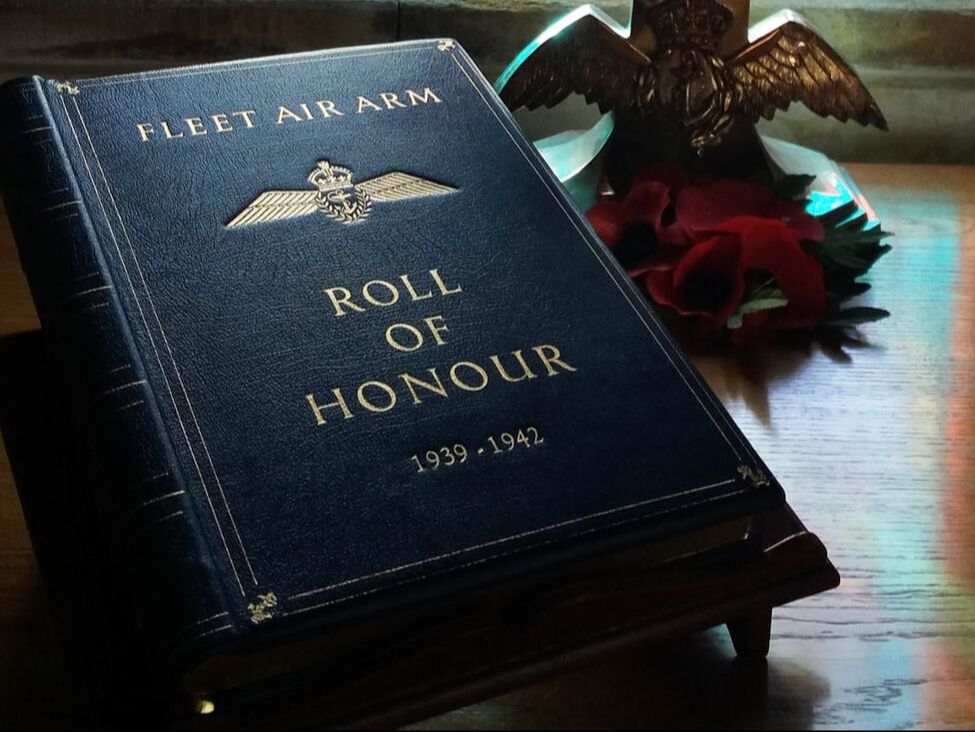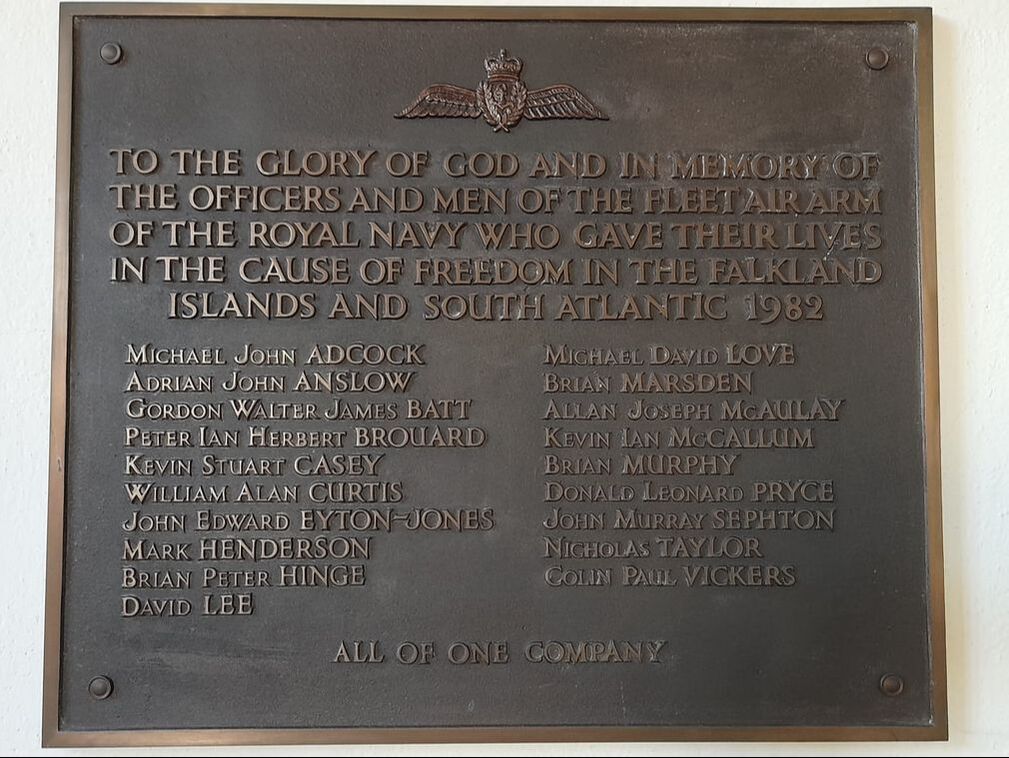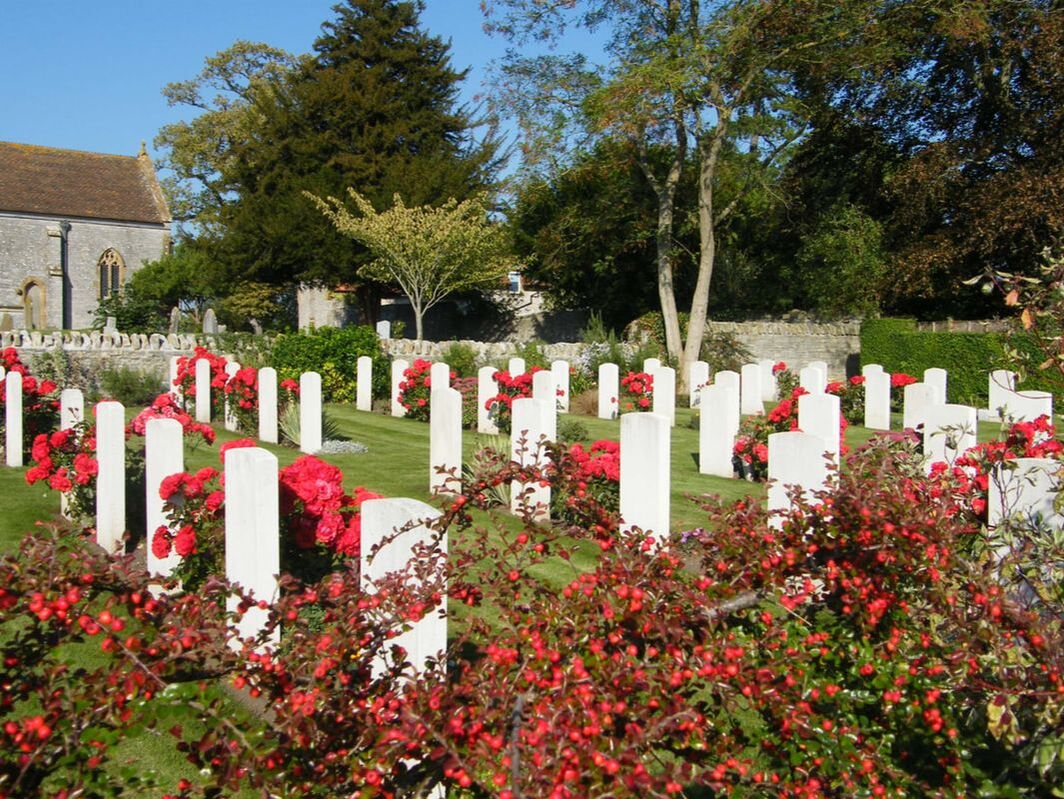The Fleet Air Arm Memorial Church Trust
Securing The Long Term Future Of The Church
The Fleet Air Arm Memorial Church Trust was formed on 19 November 1990 in order to carry out restoration and repair of the former Saint Bartholomew's Parish Church at Yeovilton. The Trust is a Registered Charity No 1001908.
There were just six founding members in 1990 but today’s Trust comprises twelve Trustees including three ex-officio positions: The Chaplain of the Fleet, the Commanding Officer of the Royal Naval Air Station Yeovilton (HMS HERON) and the Commanding Officer of the Royal Naval Air Station Culdrose (HMS SEAHAWK). The current Chairman of the Trust is Commander Graham Pay C.Eng FRAeS, a Cold War veteran and former Air Engineering Officer of HMS OSPREY, which was the typed Air Station for the Royal Navy Lynx helicopter at Portland in Dorset.
In order to secure the long-term preservation of the church the Trust entered into a lease agreement with the Secretary of State for Defence on 17 April 1998 which was renewed in 2019. In return for a peppercorn rent this agreement has enabled the church to be kept in a good state of repair for use as an Anglican Church for the Royal Naval Air Station Yeovilton. It is very much a living church, holding regular religious services and also marking significant life events for service personnel and their families. It also has an important commemorative role overseen by the Trust.
The Trust is responsible for overall governance of the church and its surrounding churchyard and for making improvements to the building and its fittings. Recent improvements include reinstallation of the Priest’s Door in the Chancel and provision of new state of the art radiators. Such improvements are for the most part reliant on generous donations and legacies from the general public, the church congregation, naval associations and other goodwill organisations.
The Trust is currently working on a very ambitious project to establish a Memorial Pathway in the grounds around the church. This is intended to enable individual Fleet Air Arm personnel and families of those who have served to record their
names and their dates of service in the pathway. The initial project definition phase of this ambitious project is almost complete and an appeal to raise the funds to build this Memorial Pathway will be launched in the near future. More detailed information on this project will be included in this website shortly so please keep an eye out for this.
There were just six founding members in 1990 but today’s Trust comprises twelve Trustees including three ex-officio positions: The Chaplain of the Fleet, the Commanding Officer of the Royal Naval Air Station Yeovilton (HMS HERON) and the Commanding Officer of the Royal Naval Air Station Culdrose (HMS SEAHAWK). The current Chairman of the Trust is Commander Graham Pay C.Eng FRAeS, a Cold War veteran and former Air Engineering Officer of HMS OSPREY, which was the typed Air Station for the Royal Navy Lynx helicopter at Portland in Dorset.
In order to secure the long-term preservation of the church the Trust entered into a lease agreement with the Secretary of State for Defence on 17 April 1998 which was renewed in 2019. In return for a peppercorn rent this agreement has enabled the church to be kept in a good state of repair for use as an Anglican Church for the Royal Naval Air Station Yeovilton. It is very much a living church, holding regular religious services and also marking significant life events for service personnel and their families. It also has an important commemorative role overseen by the Trust.
The Trust is responsible for overall governance of the church and its surrounding churchyard and for making improvements to the building and its fittings. Recent improvements include reinstallation of the Priest’s Door in the Chancel and provision of new state of the art radiators. Such improvements are for the most part reliant on generous donations and legacies from the general public, the church congregation, naval associations and other goodwill organisations.
The Trust is currently working on a very ambitious project to establish a Memorial Pathway in the grounds around the church. This is intended to enable individual Fleet Air Arm personnel and families of those who have served to record their
names and their dates of service in the pathway. The initial project definition phase of this ambitious project is almost complete and an appeal to raise the funds to build this Memorial Pathway will be launched in the near future. More detailed information on this project will be included in this website shortly so please keep an eye out for this.
A Living Memorial For The Fleet Air Arm
Roll of HonourThe side Chapel houses the Fleet Air Arm Roll of Honour. The Roll comprises of six beautifully leather bound volumes and records the names of men and women who have died whilst serving in, or with, the Royal Naval Air Service and the Fleet Air Arm.
The names and data for the Roll of Honour were collated so as to have one central point of focus for Royal Naval Air Service and Fleet Air Arm remembrance. The six volumes collectively contain some 6,500 names from the first in 1912, at the start of military flying, to the present day. Some dates record one death whilst others, such as for 17 January 1941, span several pages listing 142 Fleet Air Arm men who were killed when the SS Almeda Star was sunk by enemy action in the North Atlantic Ocean during WWII. This remains the greatest loss of life suffered by the Fleet Air Arm in a single event. |
Church MemorialsThe commemorative tablets inside the church reflect the history of the parish over many centuries and provide a glimpse back in time to tell the story of the Rectors and those who worshipped at Saint Bartholomew’s. Since the rededication of the church in 1993, the Chancel walls are adorned with memorials to those Fleet Air Arm personnel who have died in the service of their country, several of whom have no known grave. There are plaques honouring the men of Royal Naval Air Station Howden (WWI), 845 and 847 Naval Air Squadrons (1950s & 2006) as well as the Falklands Campaign (1982).
Others remember individuals such as Aircraft Artificer Peter Garden who fell into crevasse whilst on a Royal Navy Expedition to East Greenland in 1966 or Lieutenant Ernest Massee killed on 4 June 1956 when Sea Venom, Serial Number WW 262, stalled during deck landing trials on HMS BULWARK and crashed into the Mediterranean Sea off Malta. |
Royal Naval CemeteryThe Royal Naval Cemetery, Yeovilton came into being when the Crown purchased a piece of land from Mr Ernest Wetherall of Manor Farm in September 1942. The need arose primarily because of the high number of young trainee aircrew killed in flying accidents from the adjacent and hastily built HMS Heron at the outbreak of WWII. The Saint Bartholomew's Churchyard already had 15 men buried there and was almost at full capacity, so it was soon evident that there was not enough space for anymore fatalities.
Still in use today, the Royal Naval Cemetery contains over 100 military graves of which 22 are Second World War casualties cared for by the Commonwealth War Graves Commission. Some who are laid to rest here are far from home such as Lieutenant Gerard Mallee, aged 22 from the Netherlands, who died when his Wildcat aircraft stalled and crashed into a tree on approach to the airfield on 26 April 1944. |
The Victoria Cross Recipients
The church displays a memorial to four naval aviators who were recipients of the Victoria Cross.
The Victoria Cross is the highest military decoration and prestigious award for valour 'in the face of the enemy'. It takes precedence over all other orders, decorations and medals. Read their stories midway down the "Their Story" page.
The Victoria Cross is the highest military decoration and prestigious award for valour 'in the face of the enemy'. It takes precedence over all other orders, decorations and medals. Read their stories midway down the "Their Story" page.






